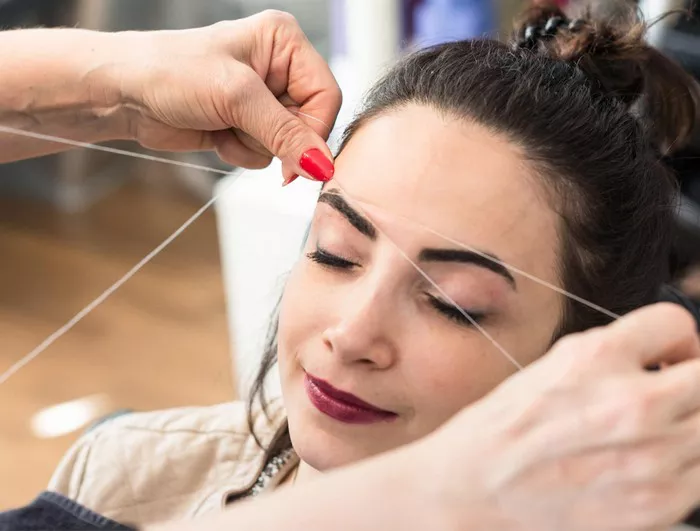The thread facelift, also known as a thread lift or non-surgical facelift, is a minimally invasive cosmetic procedure designed to lift and tighten sagging skin on the face and neck. As an alternative to traditional facelift surgery, the thread facelift offers a way to achieve a more youthful appearance without the need for extensive incisions or downtime. In this article, we provide a comprehensive overview of the thread facelift procedure, including its process, benefits, candidacy, and considerations for those considering this innovative technique.
Understanding the Thread Facelift
The thread facelift involves the use of specialized threads made from biocompatible materials, typically polydioxanone (PDO), that are inserted into the skin to lift and reposition sagging tissue. These threads stimulate collagen production, resulting in improved skin elasticity and firmness. The thread facelift is particularly effective in treating mild to moderate signs of aging, such as jowls, nasolabial folds, and sagging cheeks.
The Procedure Process
The thread facelift procedure is typically performed in a licensed medical office by a qualified and experienced medical professional. Here is an overview of the typical process:
Consultation: The process begins with a consultation, during which the patient discusses their goals, concerns, and medical history with the practitioner. The practitioner assesses the patient’s facial structure, skin condition, and suitability for the procedure.
Anesthesia: The treatment area is numbed using local anesthesia to ensure the patient’s comfort during the procedure.
Thread Insertion: The threads, preloaded into thin needles, are inserted under the skin through small entry points. The threads are strategically placed to lift and support the targeted areas.
Thread Placement: Once the threads are inserted, the practitioner carefully adjusts their positioning to achieve the desired lift and contour.
Stimulation of Collagen: The threads have a dual effect—they provide immediate lift and support while also stimulating the production of collagen. Collagen is a protein that contributes to skin elasticity and firmness.
Completion and Recovery: Once the threads are in place, the procedure is complete. The entry points are small and typically do not require stitches. Patients are usually advised to avoid strenuous activities and facial manipulation for a few days following the procedure.
Benefits of a Thread Facelift
Non-Surgical: The thread facelift offers a non-surgical alternative to traditional facelift surgery, which involves more extensive incisions and a longer recovery period.
Minimally Invasive: The procedure involves minimal incisions and is associated with shorter downtime compared to surgical facelifts.
Natural-Looking Results: The gradual collagen stimulation achieved through the threads results in a natural-looking lift that improves over time.
Quick Procedure: The thread facelift is relatively quick, often taking about an hour or less to complete.
Minimal Scarring: The tiny entry points used for thread insertion typically result in minimal scarring, making the procedure less noticeable.
Candidacy and Considerations
While the thread facelift offers numerous benefits, it’s important to consider the following factors:
Candidacy: The ideal candidate for a thread facelift is an individual with mild to moderate skin laxity and sagging. It’s important to have realistic expectations about the results.
Consultation: A consultation with a qualified medical professional is crucial to determine if the procedure is suitable for your specific concerns and goals.
Temporary Results: While the results of a thread facelift can last anywhere from 1 to 2 years, they are not permanent. Regular maintenance treatments may be needed to sustain the effects.
Potential Side Effects: Like any cosmetic procedure, a thread facelift carries potential risks and side effects, including bruising, swelling, and infection. Choosing an experienced practitioner is essential to minimize these risks.
Downtime: While the downtime is typically shorter than that of a surgical facelift, patients may still experience some swelling and discomfort following the procedure.
Consultation and Choosing a Professional
If you’re considering a thread facelift, it’s essential to consult with a qualified and experienced medical professional. Look for practitioners who are licensed, trained, and skilled in performing thread facelift procedures. During the consultation, the practitioner will assess your candidacy, discuss the expected outcomes, and address any concerns you may have.
Conclusion
The thread facelift is an innovative and minimally invasive procedure that offers a non-surgical solution for lifting and tightening sagging skin on the face and neck. By using specialized threads to lift and stimulate collagen production, patients can achieve natural-looking results with minimal downtime. If you’re considering a thread facelift, a consultation with a qualified medical professional is the first step to determine if this procedure aligns with your aesthetic goals and expectations. With the right practitioner and a thorough understanding of the process, you can confidently embark on the journey to a rejuvenated and youthful appearance.

